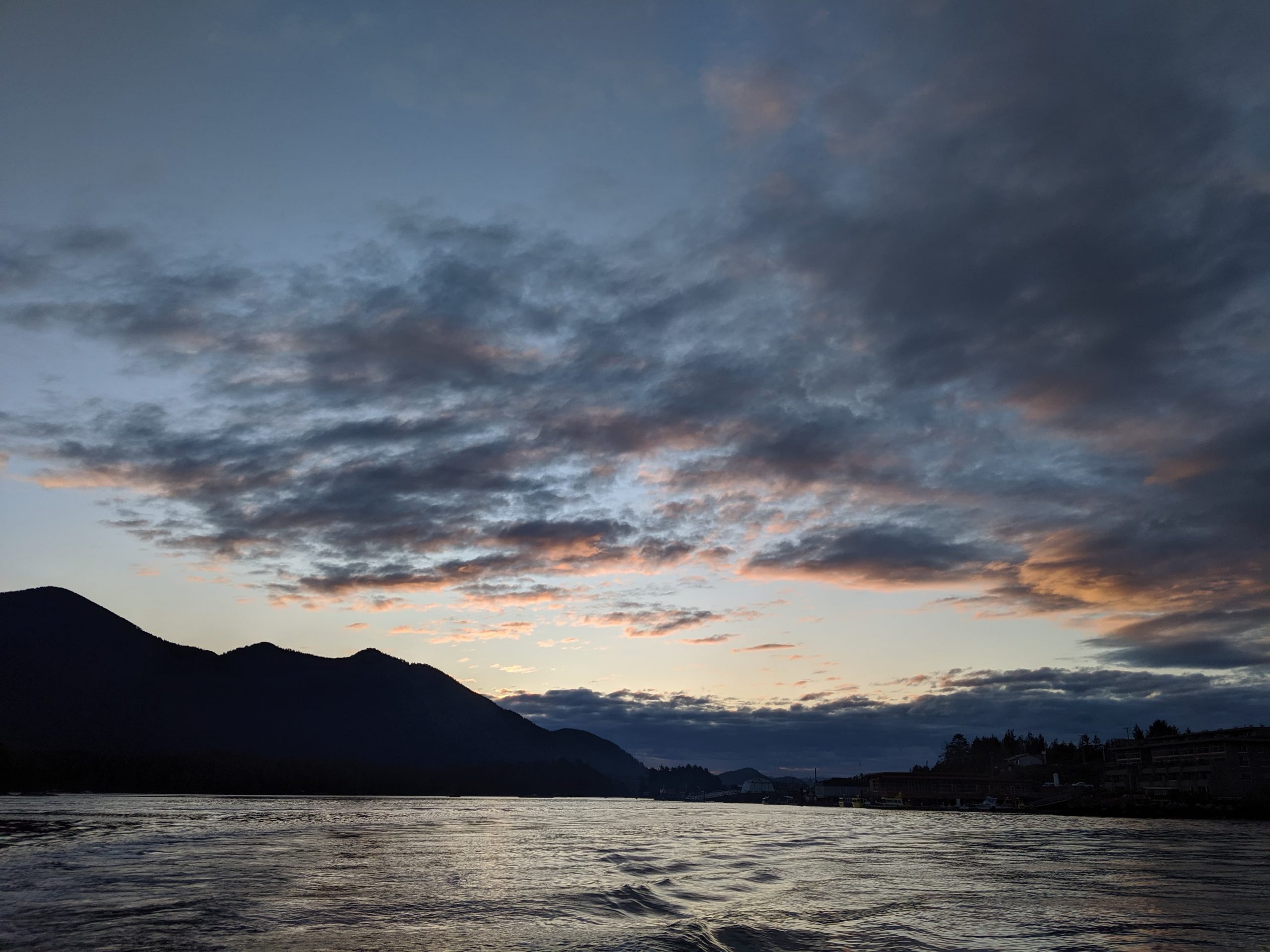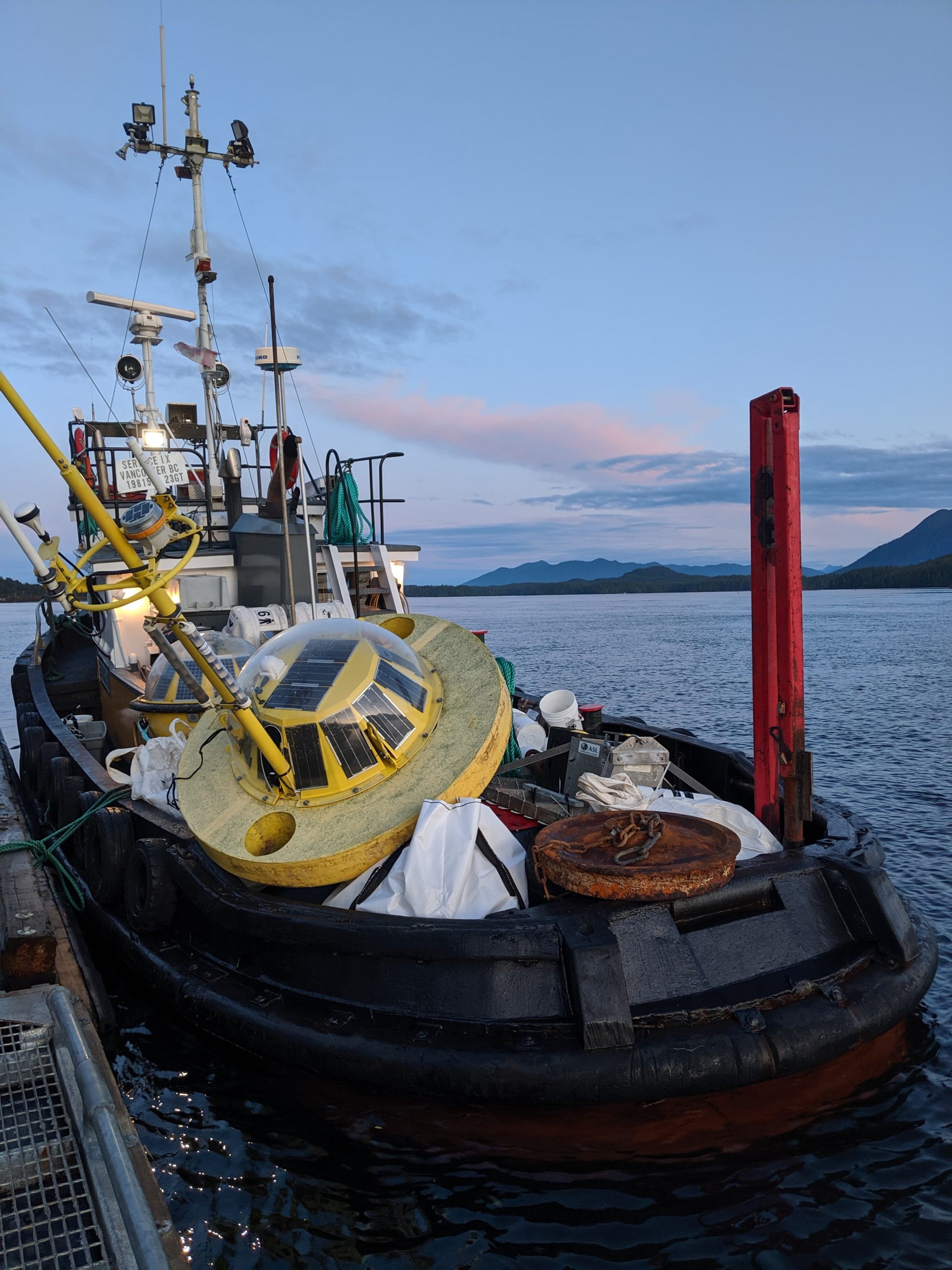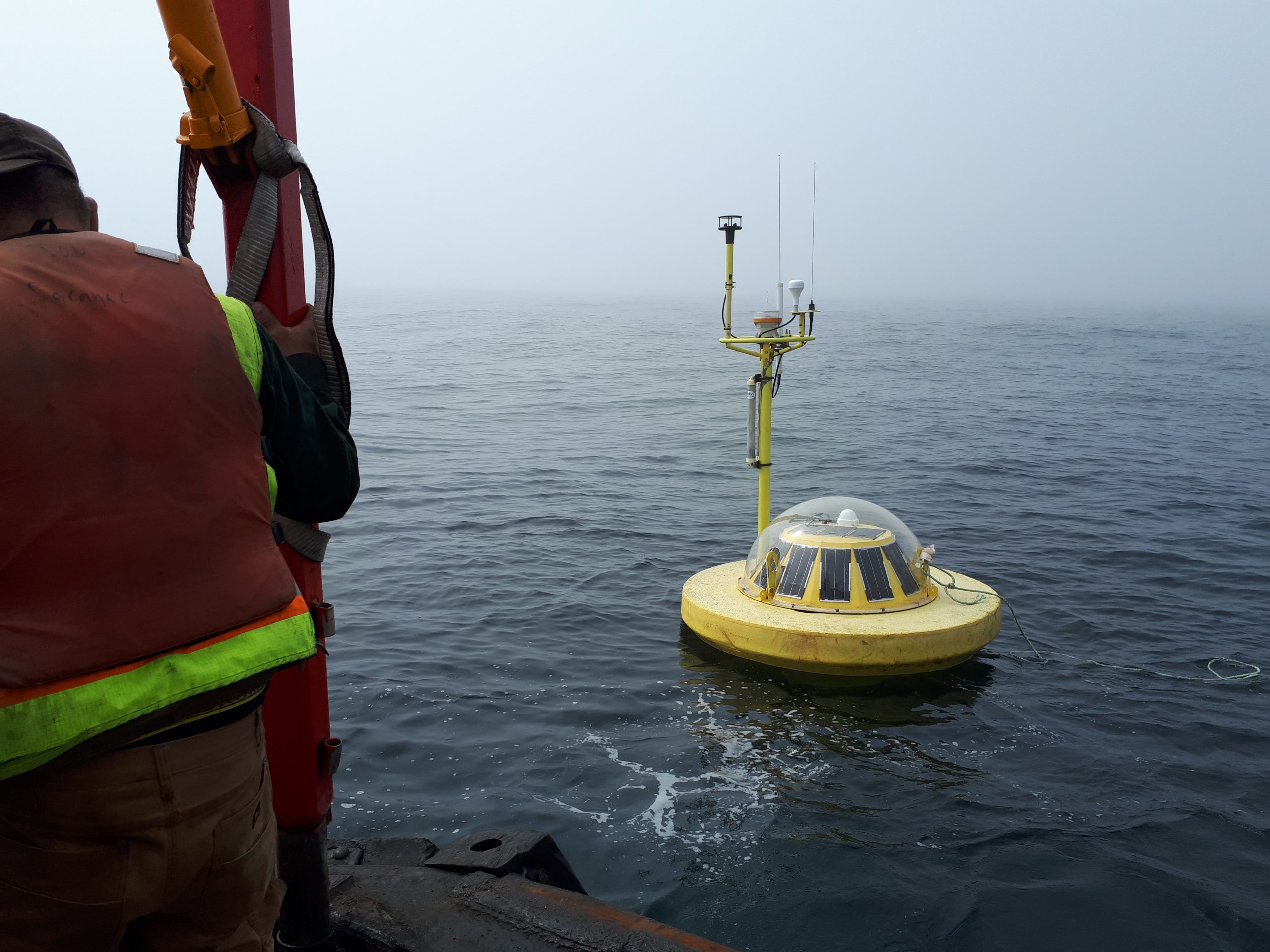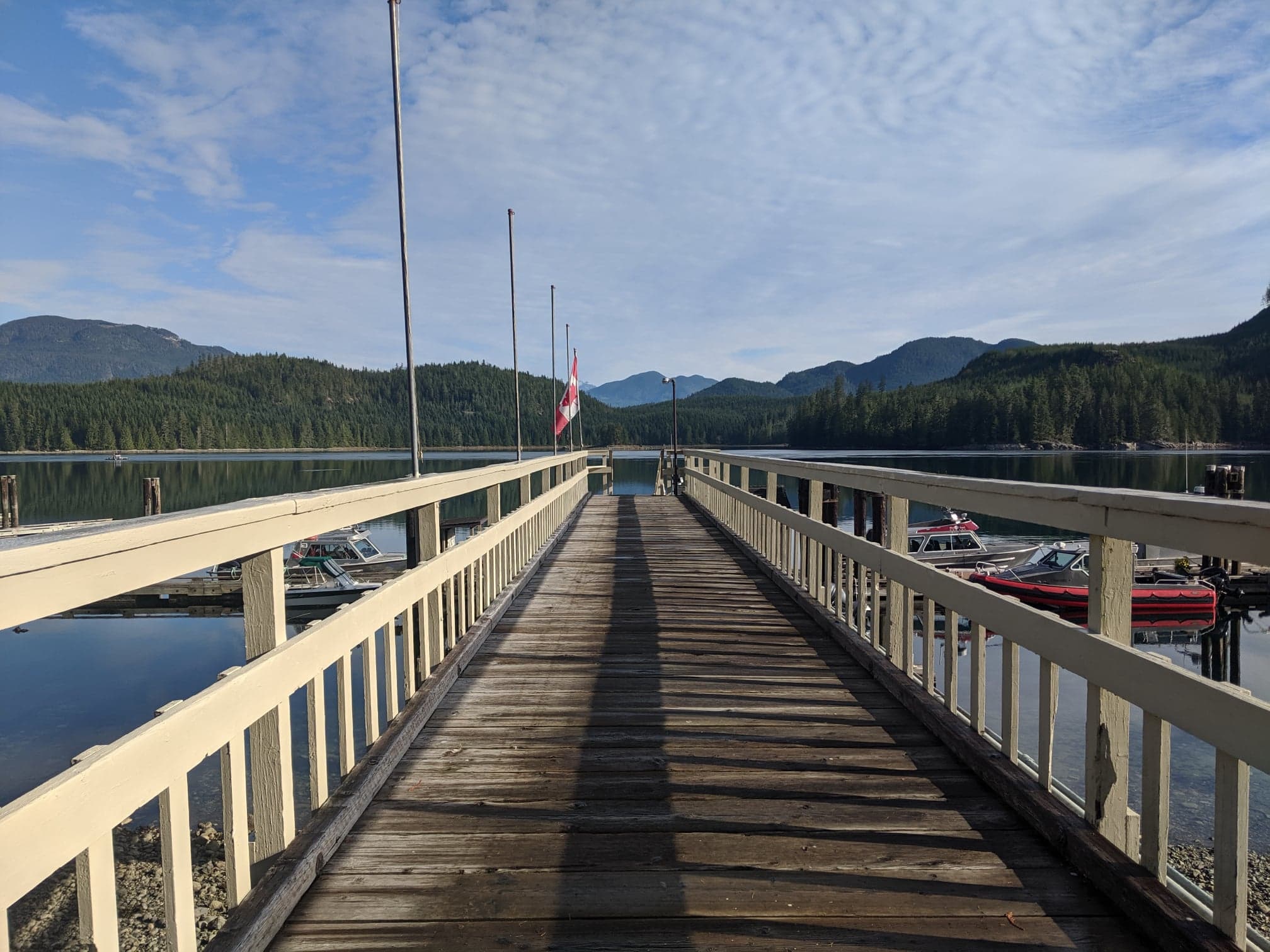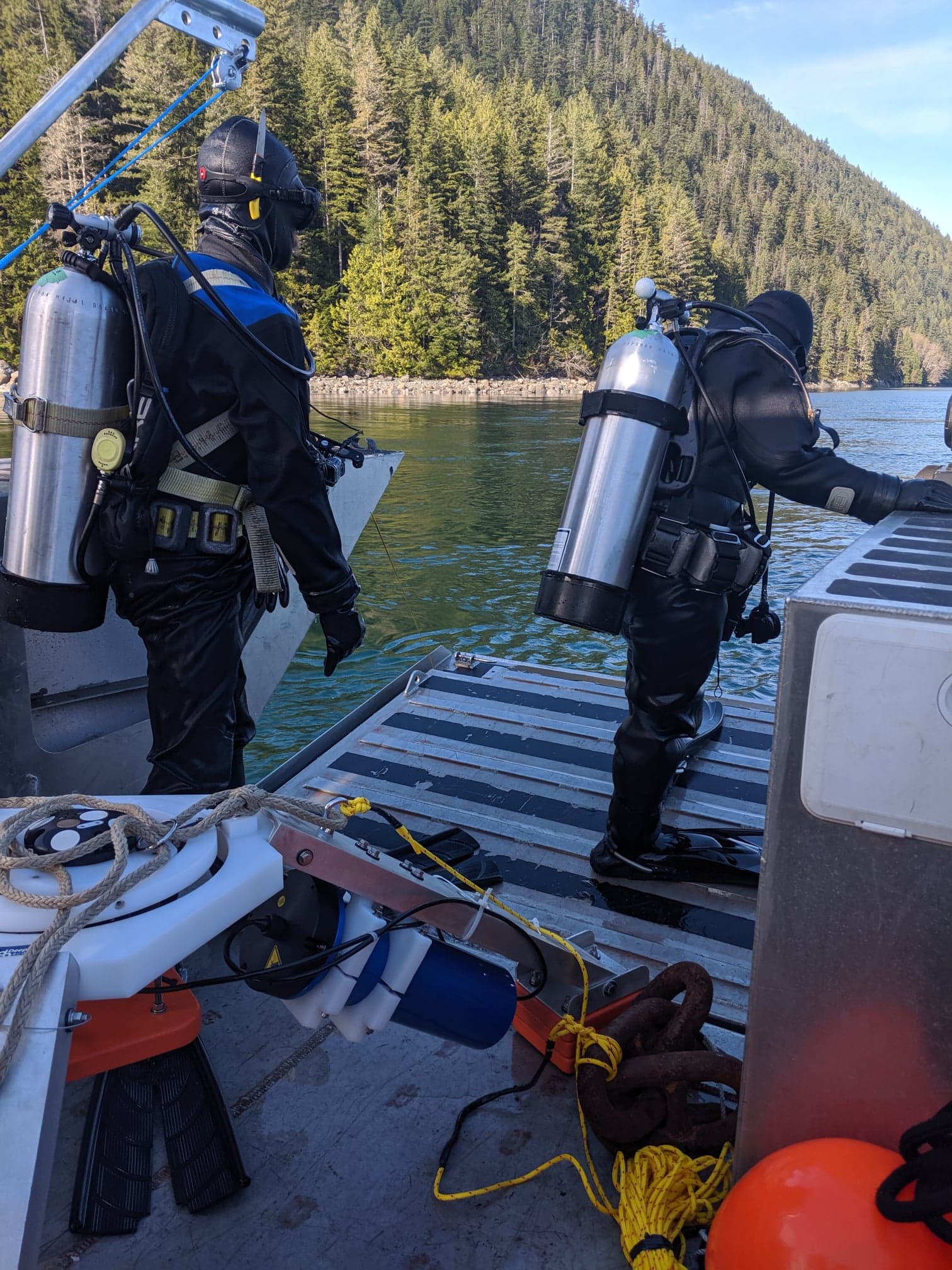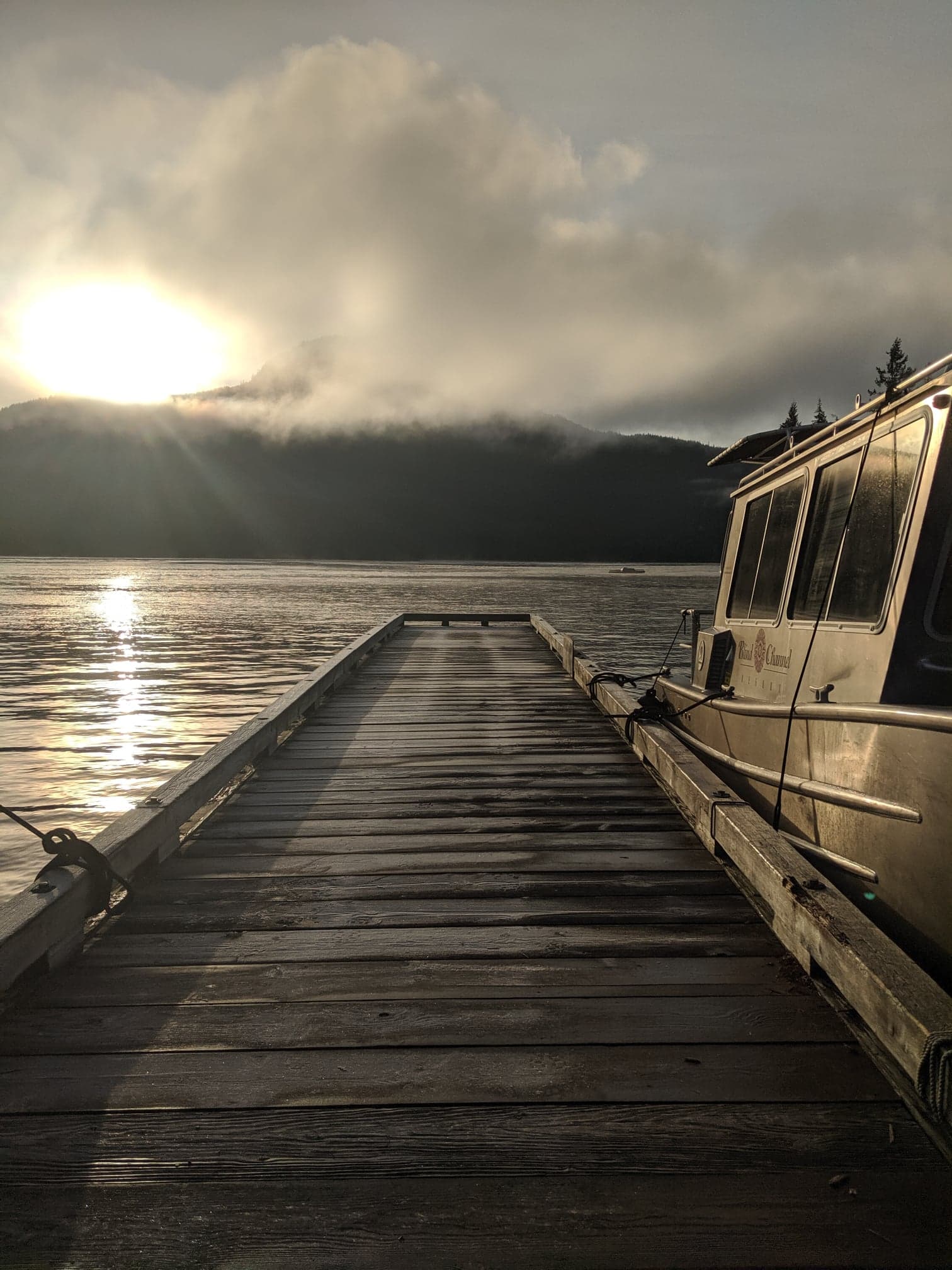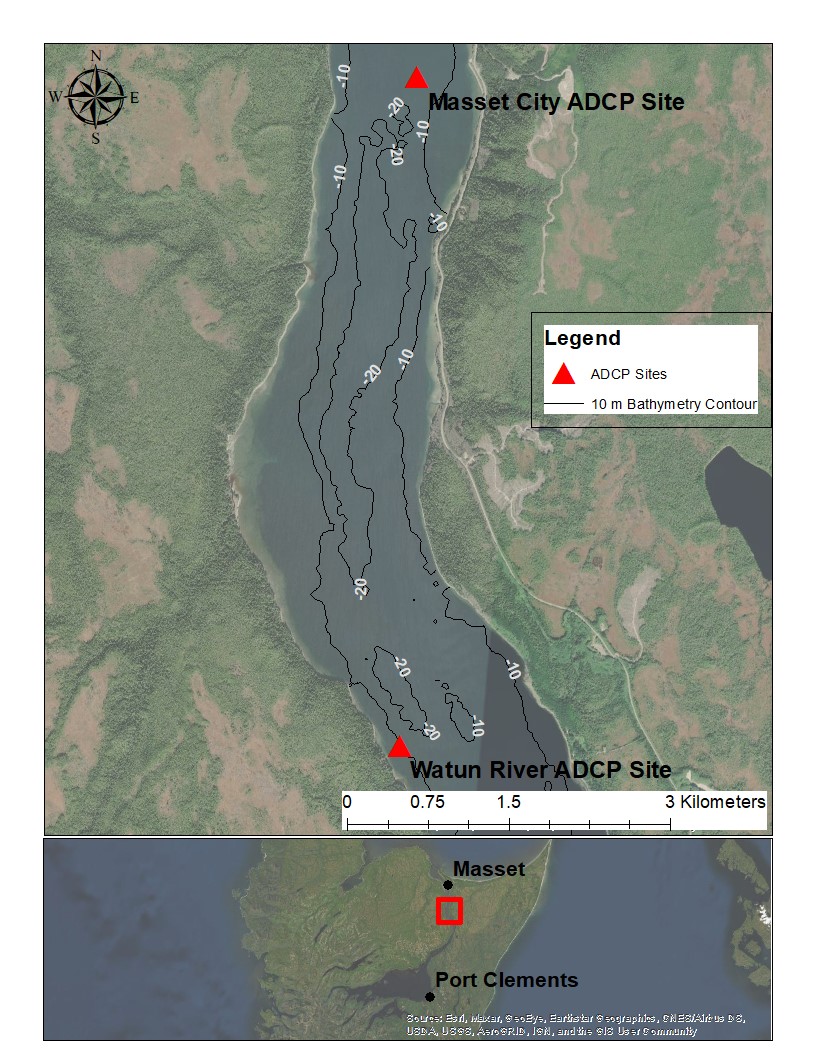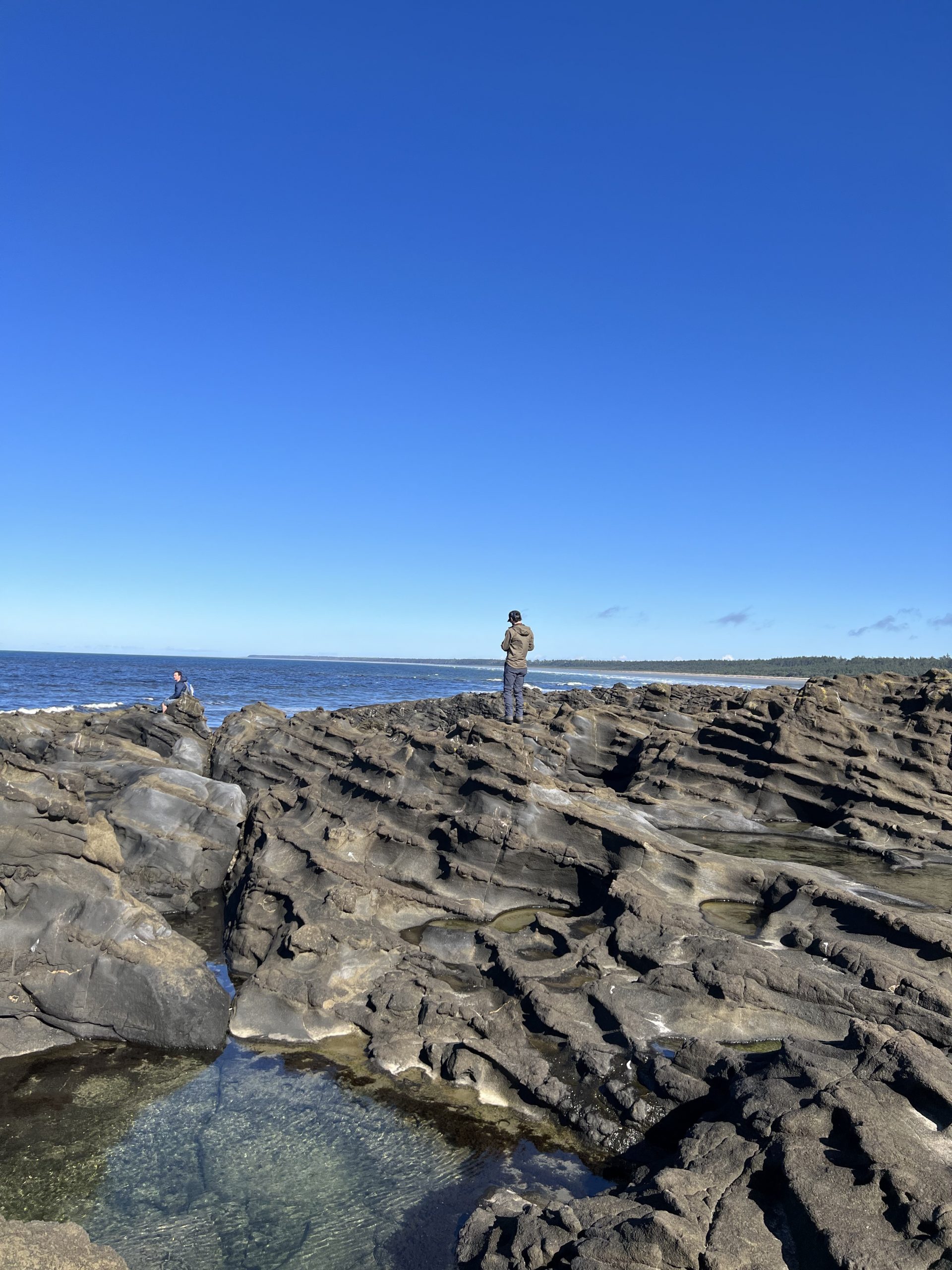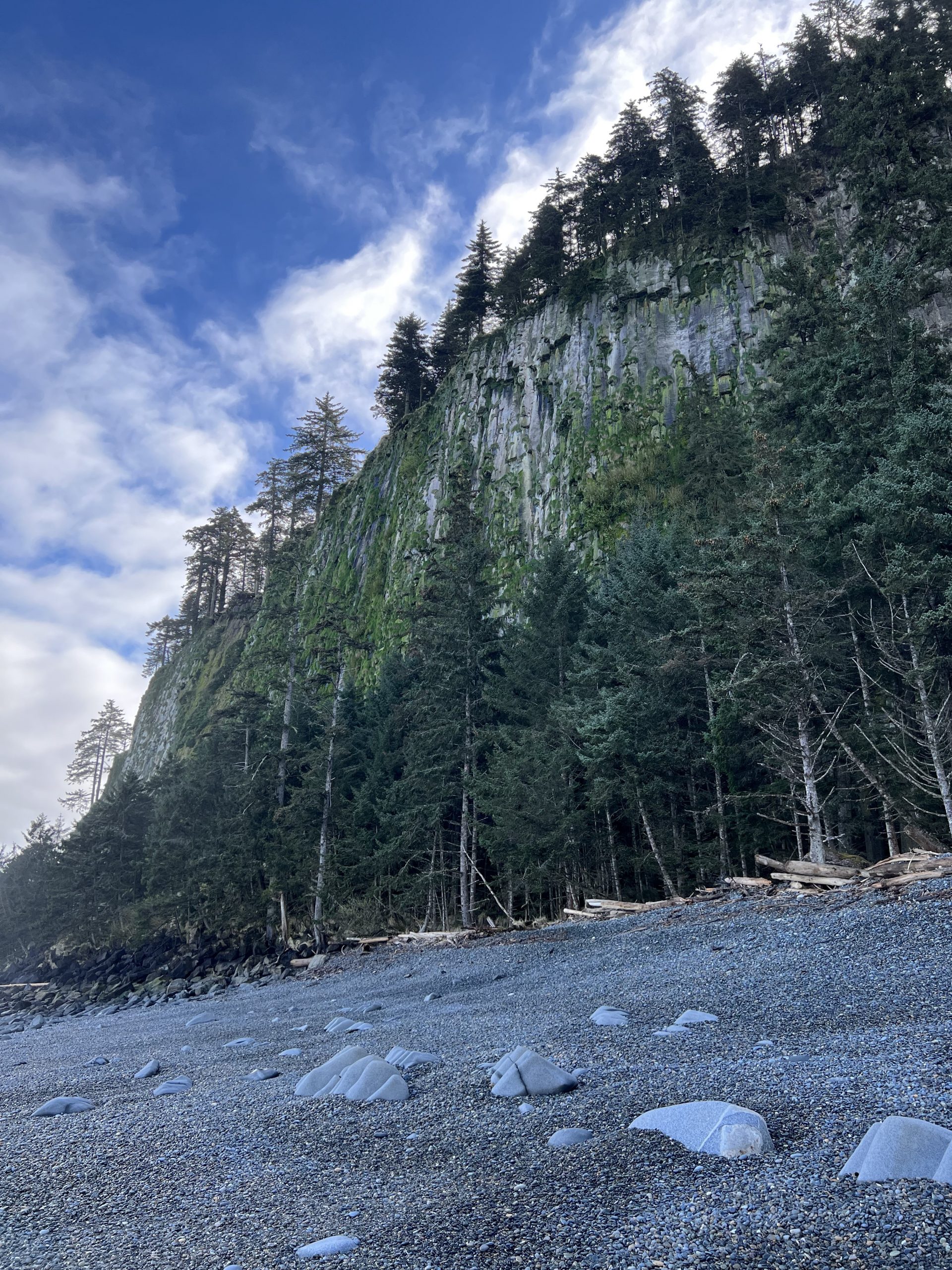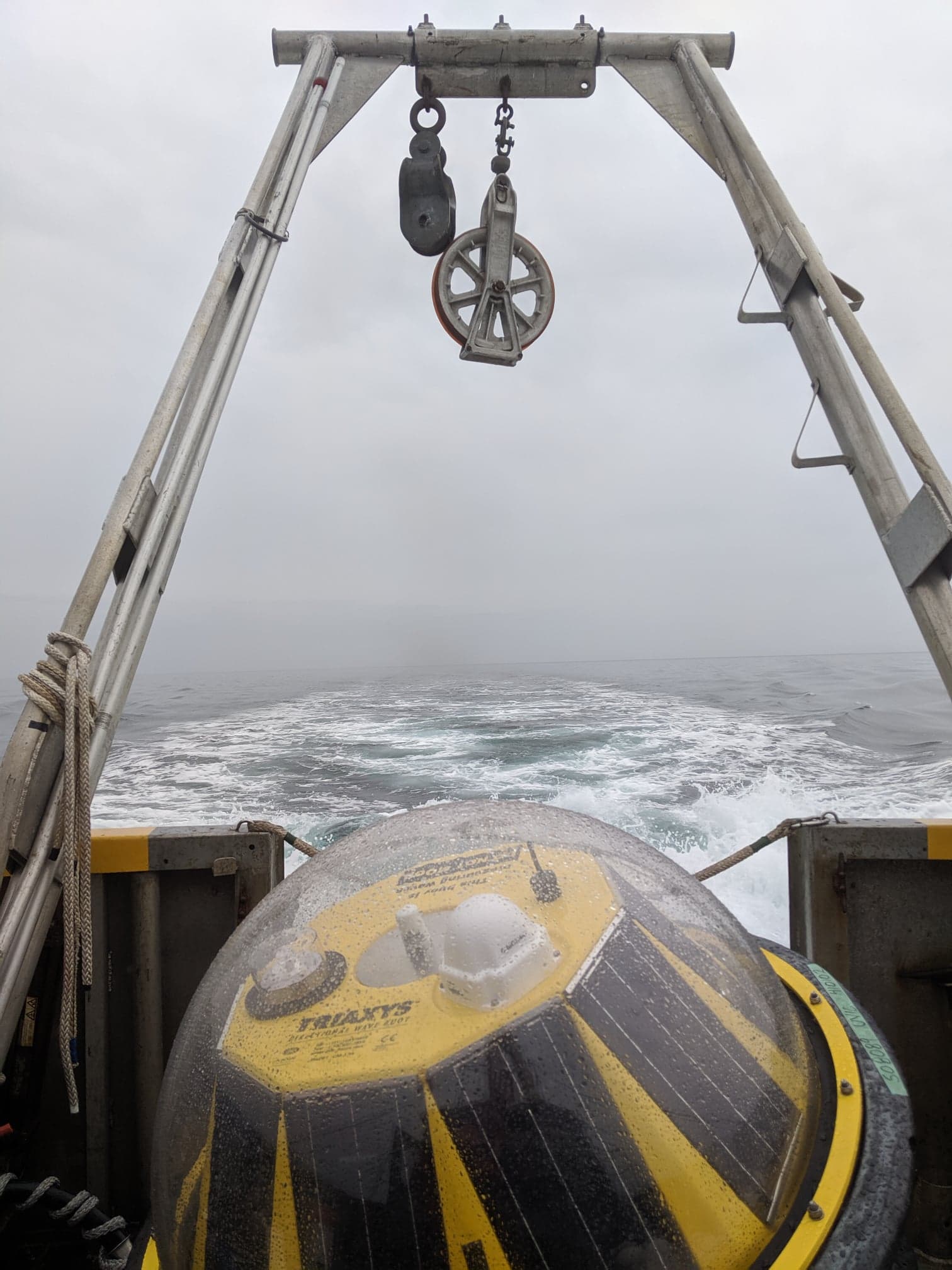Case Studies
.
Trial Island
Buoy & land station deployment
November 2021 to Spring 2024
A wind-tide-and-wave-measurement buoy and a land station LiDAR (Light Detection and Ranging) were co-deployed at Trial Island. The data from this deployment will be used for validation the accuracy of the buoy’s LiDAR data (which is processed to account for the buoy’s motion) with a steady land station LiDAR. These devices measure wind speeds and directions up to 200m above sea level.
Project personnel: Curran Crawford, Brad Buckham, Chloe Immonen, Jackie Van der Vlugt
Yuquot
Buoy deployment
August 2021 to Summer 2024
Two wave-measurement buoys were co-deployed at Maquinna Point, near Nootka Island BC. The data from this deployment will be used for calibration of a wave model in the area to determine feasibility of deploying a wave energy converter device.
Project personnel: Jules Pare, Riley Richardson, Ignacio Beyá Marshall, Chloe Immonen, Jackie Van der Vlugt
Amphitrite Bank & Long Beach
Buoy deployments
October 2019 to Summer 2024
This deployment of two wave-measurement buoys off the coast of Ucluelet, in partnership with the School of Earth and Ocean Sciences at UVic to gain data on rogue waves.
Project personnel: Majid Soleimani nia, Chloe Immonen, Clayton Hiles, Jackie Van der Vlugt
Blind Channel
ADCP deployment
October 2019 to June 2020, April 2021 to July 2021
This deployment of an Acoustic Doppler Current Profiler (ADCP) is taking place to gain current speed data in Blind Channel.
Project personnel: Ben Whitby, Majid Soleimani nia, Chloe Immonen, Jackie Van der Vlugt
Hecate Strait
Buoy deployment
September 2022 to July 2023
This deployment of a wave-measurement buoy was deployed to understand the wave resource off the coast of Sandspit, BC.
Project personnel: Ben Whitby, Riley Richardson, Ignacio Beyá Marshall, Chloe Immonen, Jackie Van der Vlugt
Masset
ADCP deployment
March 2022 to July 2022
This deployment of an Acoustic Doppler Current Profiler (ADCP) is taking place to gain current speed data in Masset Inlet.
Project personnel: Ben Whitby, Riley Richardson, Ignacio Beyá Marshall, Chloe Immonen
Sooke Bay
Buoy & ADCP deployment
May to August 2019
A wave-measurement buoy and a current-measuring ADCP were co-deployed in Sooke Bay. The data from this deployment will be used for validation of a coupled wave and tidal models and to study the interactions seen between waves and tides.
Project personnel: Ben Whitby, Clayton Hiles, Ignacio Beyá Marshall, Chloe Immonen
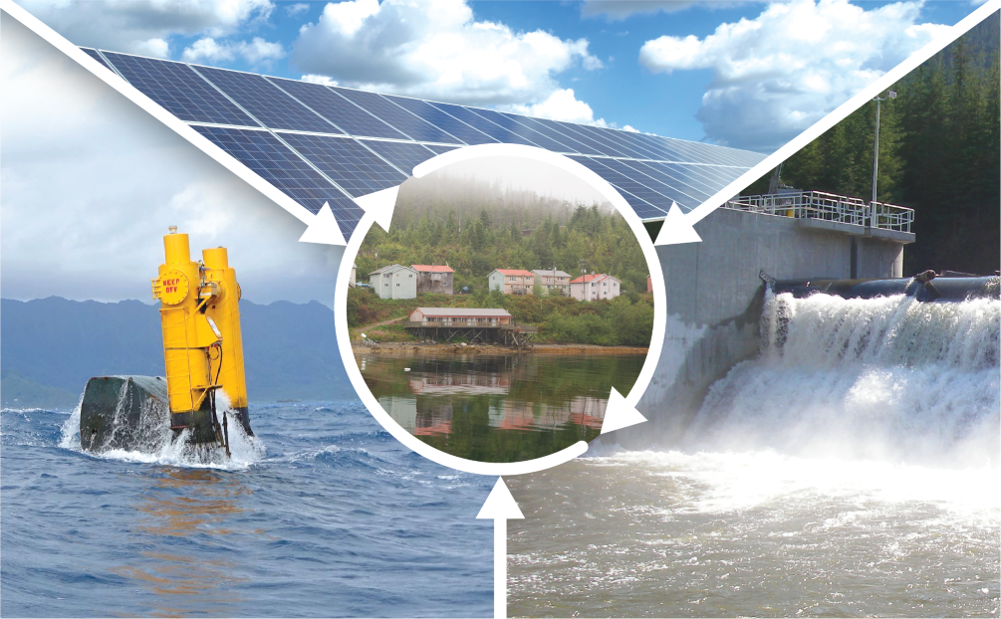
Hot Springs Cove
Solar & Wave Opportunities
Hot Springs Cove is currently reliant on diesel for electricity (average of 287,000 litres/year). The settlement could, however, supplement their upcoming hydropower project with wave and solar to help displace diesel. PRIMED completed a number of resource assessment and grid modelling exercises, and found reduced fuel consumption potentials.
Project personnel: Anthony Truelove, Clayton Hiles, Brad Buckham
Quatsino First Nation
Wave energy opportunity
PRIMED has performed an assessment of wave energy resources in the region and a multi-factor GIS assessment to identify strategic sites for wave energy development. This information was synthesized to be used by Barkley Project Group and Quatsino First Nation to support development of a Community Energy Plan.
Project personnel: Linda Xu, Aaron Eley, Helen Bailey, Bryson Robertson, Brad Buckham, Nathan Lawko, Clayton Hiles

Coupling of ProteusDS & AeroDyn
Simulation Time-Step Coordination
The coupling will allow hub kinematics to be passed to AeroDyn via function parameters, and the hydrodynamic/aerodynamic results to be returned to ProteusDS. The project currently uses loose coupling, meaning both ProteusDS and AeroDyn integrate their own simulation states. This leads to a problem caused by the fact that ProteusDS uses a variable time-step, while AeroDyn uses a fixed time-step, so outputs are not exchanged at the same time. This was solved by specifying a sufficiently small value for AeroDyn’s time-step.
Project personnel: Ben Whitby, Dustin Condon
Coupling of ProteusDS & AeroDyn
Implementation & inclusion of a two-mass drive train model
A continuation of the above project, this stage involved implementing and including a drive train model in the coupling of AeroDyn and ProteusDS. Introducing this drive train model into the existing coupling created two main problems related to how the parts are coordinated. With the addition of the drive train, ProteusDS changed its role to managing the nacelle kinematics instead of those of the hub; therefore, the hub kinematics must be calculated based on the nacelle kinematics and the rotor shaft state.
Project personnel: Ben Whitby, Dustin Condon

BC Wave Extremes
The risk of extreme wave conditions must be considered when designing marine energy converters. PRIMED has developed a new approach to extreme values analysis which leverages high resolution hind-cast modelling and long-term wave measurements. We applied this approach to the BC Coast to help understand the locations most at risk for extreme wave conditions. The results of this work have been published to the Journal of Estuarine, Coastal and Shelf Science.
Project personnel: Clayton Hiles, Bryson Robertson, Brad Buckham
AOE WEC optimization
Accumulated Ocean Energy Inc (AOE) plans to deploy an integrated multi-unit wave energy converter system to convert wave energy into compressed air required for marine habitat oxygenation. PRIMED is currently executing the preliminary design optimization and performance assessment program to evaluate and enhance the suitability of the AOE system for providing a carbon-free platform to meet the demands for marine habitat oxygenation. Currently PRIMED has provided the main tools required for this project, including sit selection, high fidelity numerical models and optimization tools.
Project personnel: Moien Mojabi
INGINE performance assessment
This project is an international collaboration with INGINE, a wave energy company in South Korea. The main aim of this project is to provide a high-fidelity performance assessment of INGINE wave energy technology in Canadian Pacific Coast. The INGINE system is being considered to be deployed as the source of clean renewable energy for the village of Yuquot, an off-grid area located in the territory of the Mowachaht/Muchalaht First Nation (MMFN) on the West Coast of Vancouver Island. Based on the resource assessment performed by PRIMED, the performance assessment will be carried out at four candidate deployment sites. Among the candidate sites presented in Fig.1, site B (see Fig. 2) has been initially found to be the most appropriate site to deploy the technology.
Project personnel: Moien Mojabi
Marine Energy Resources Atlas Canada
PRIMED is working with the NRC to create a Marine Energy Resource Atlas for Canada (MERACAN), a web application that allows users to map and view Canadian marine renewable energy resource data stored online. The wave data held by PRIMED is a nationally unique resource that is perfectly suited to incorporation into the NRC Marine Energy Atlas.
Project personnel: Sam Johnson





